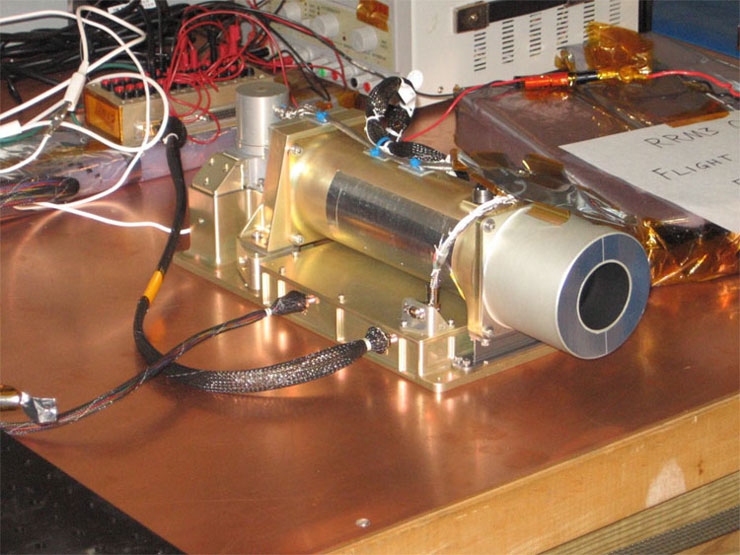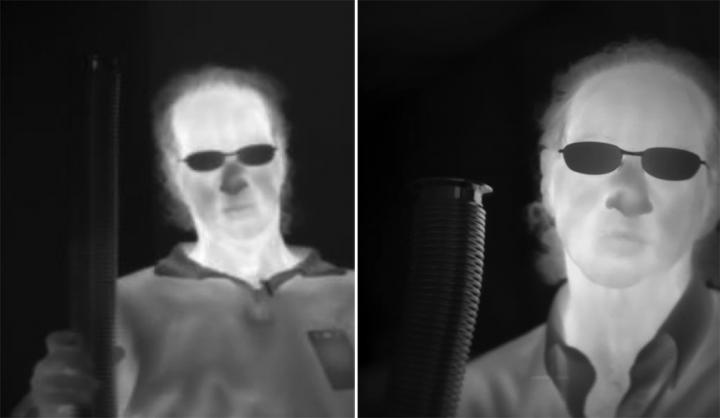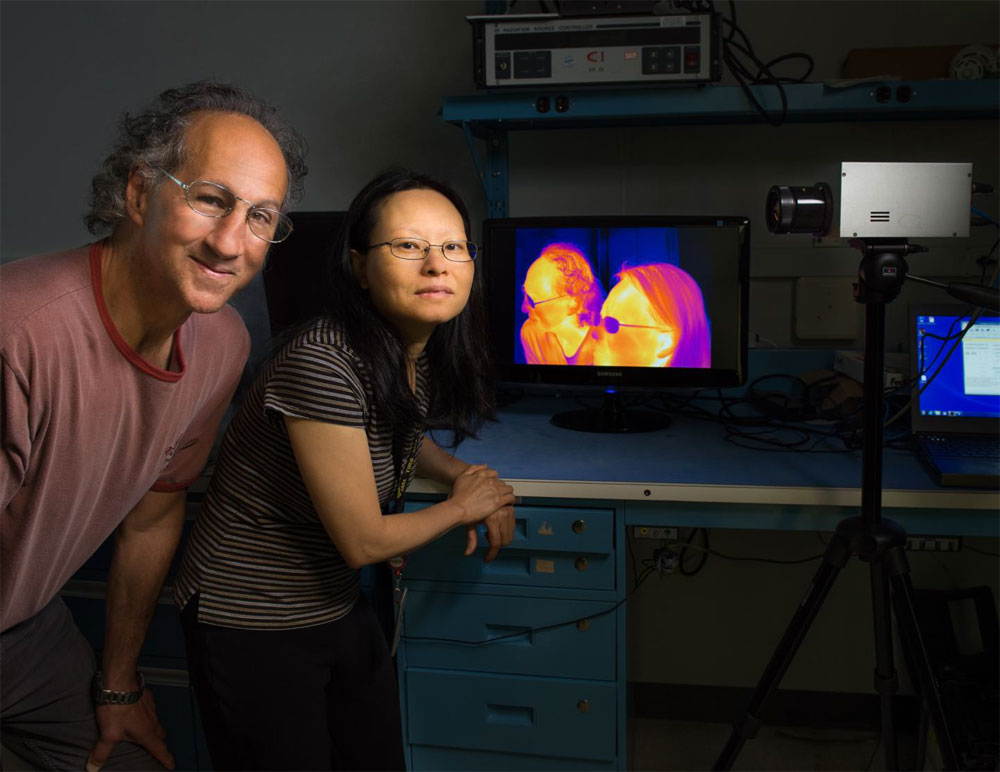
New Photodetector Enables NASA’s Thermal Imager
A compact thermal camera named the Compact Thermal Imager, or CTI, has been developed by NASA using photodetector technology known as strained-layer superlattice, or SLS.

NASA's advanced detector technology, a strained-layer superlattice (SLS) detector, will be demonstrated on an upcoming robotic servicing demonstration mission. Courtesy of NASA.
The SLS assembly is a large-format detector, measuring nearly 16 in. long and 6 in. tall. It consumes little power, operates at liquid-nitrogen temperatures, is easily fabricated in a high-technology environment, and is inexpensive almost to the point of being disposable, according to engineer Murzy Jhabvala.
The detector technology is also quickly and easily customized for different applications, Jhabvala said. The Goddard Detector Development Laboratory, for example, recently fabricated a 1024- x 1024-pixel SLS array and plans to increase its size to 2048 x 2048 pixels in the very near future.
Jhabvala collaborated with his industry partner, the New Hampshire-based QmagiQ, to develop the SLS detector assembly. The SLS is based on the quantum well infrared photodetector, or QWIP, technology that Jhabvala and his government and industry collaborators spent more than two decades refining.
Compared with its predecessor, the SLS detector is 10 times more sensitive and operates over a broader IR spectral range and at substantially warmer temperatures — 70 K for the SLS array compared with 42 K for the QWIP array. Because the SLS array can operate at warmer temperatures, its cooling system can be smaller, and so it consumes less power.

The image on the right shows the improved resolution of the strained-layer superlattice (SLS) detector array as compared with that of the quantum well infrared photodetector technology at left. Courtesy of NASA.
During NASA’s next Robotic Refueling Mission 3, the CTI will image and measure fires, ice sheets, glaciers, and snow surface temperatures on Earth’s surface. It will also measure the transfer of water from soil and plants into the atmosphere.

Goddard detector engineer Murzy Jhabvala (left) and his team, including Anh La (right) and Don Jennings (not pictured), advanced a new detector technology called strained-layer superlattice, which is pictured in the background. Courtesy of NASA/W. Hrybyk.
The CTI and its SLS detectors will employ a hybrid computing system that will control the instrument and process the images and video that it takes while in orbit.
The demonstration’s goal, Jhabvala said, is to raise SLS’s technology-readiness level to nine — meaning that it has flown in space and has demonstrated that it operates well under the extreme environmental conditions found in space.
“This is a very important technology milestone,” Jhabvala said. “We needed this mission. When we demonstrate our detector array, multiple copies can be made, assembled, and aligned into focal plane arrays that would allow us to image large swaths of Earth’s surface from space in the future.”
/Buyers_Guide/QmagiQ_LLC/c12363